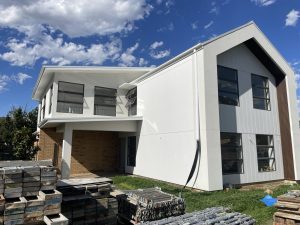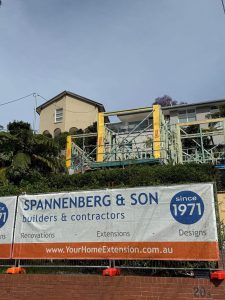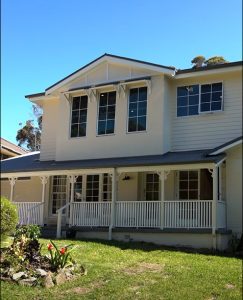
With the scaffolding now removed, the striking modern barn facade and its refined textured finishes are being revealed.
We’ve combined a smooth acrylic render with Weathertex Pty Ltd cladding to emphasize the buildings vertical proportion, while composite cladding lines the interior of the barn gable, creating a warm and balanced finish. Windows by Wideline Windows & Doors compliment the design.



